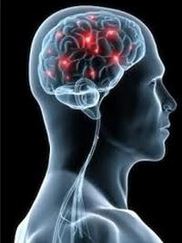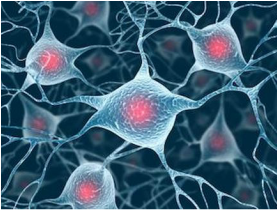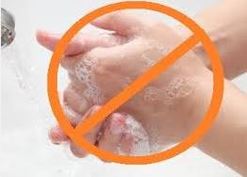
I recently had the pleasure of attending a two day training on “Harnessing the Power of the Mind, presented by Dr Daniel Siegel (American psychiatrist and author of Mindsight:The New Science of Personal Transformation).
In this training, Dr Siegel highlighted the results of the latest research into “neuroplasticity” which he defined as the capacity to grow new brain cells and create new connections in the brain in response to experience.
The good news about neuroplasticity is that, unlike what was previously believed, new brain cells and new connections in the brain can be grown throughout our lives, not just during our childhood. Through his work in this area, Dr Siegel has identified six daily practices which everyone can do to maximize their well-being, brain health and ability to change their brain to create a better life.
In this training, Dr Siegel highlighted the results of the latest research into “neuroplasticity” which he defined as the capacity to grow new brain cells and create new connections in the brain in response to experience.
The good news about neuroplasticity is that, unlike what was previously believed, new brain cells and new connections in the brain can be grown throughout our lives, not just during our childhood. Through his work in this area, Dr Siegel has identified six daily practices which everyone can do to maximize their well-being, brain health and ability to change their brain to create a better life.

Neuroplasticity and Psychotherapy
Dr Siegel explained that how we focus our attention actually shapes the structure of the brain. He highlighted how psychotherapy changes your brain by combining the attuned, empathic and safe relationship you develop with your therapist with the integration of past and current experiences, new information and insights.
Dr Siegel sees therapists as being “integrationists”. We integrate new ways of seeing things into growing new brain pathways as we choose who we want to be rather than being a slave to our past. Ultimately, as therapists, we harness neuroplasticity to grow integrative fibres in our client’s brains. His research has found that both mindfulness (i.e. non-judgemental, focused attention) and secure relationships increase integration.
I have found these principles to be invaluable when I am helping my clients who have become demoralized by the seemingly insurmountable challenges of changing life-long mental health conditions and unhelpful habits. These ideas and the following six practices are relevant to anyone trying to recover from or overcome a whole range of conditions including depression, trauma, anxiety, substance abuse and unresolved issues from childhood.
It takes around two to three months to grow new brain cells and connections. Thus, while new insights may occur in therapy, allow time for these changes to consolidate. You can further boost the process of change by engaging in these daily practices that facilitate neuroplasticity.
Dr Siegel explained that how we focus our attention actually shapes the structure of the brain. He highlighted how psychotherapy changes your brain by combining the attuned, empathic and safe relationship you develop with your therapist with the integration of past and current experiences, new information and insights.
Dr Siegel sees therapists as being “integrationists”. We integrate new ways of seeing things into growing new brain pathways as we choose who we want to be rather than being a slave to our past. Ultimately, as therapists, we harness neuroplasticity to grow integrative fibres in our client’s brains. His research has found that both mindfulness (i.e. non-judgemental, focused attention) and secure relationships increase integration.
I have found these principles to be invaluable when I am helping my clients who have become demoralized by the seemingly insurmountable challenges of changing life-long mental health conditions and unhelpful habits. These ideas and the following six practices are relevant to anyone trying to recover from or overcome a whole range of conditions including depression, trauma, anxiety, substance abuse and unresolved issues from childhood.
It takes around two to three months to grow new brain cells and connections. Thus, while new insights may occur in therapy, allow time for these changes to consolidate. You can further boost the process of change by engaging in these daily practices that facilitate neuroplasticity.

Six things you can do to maximise brain neuroplastcity
1. Develop relationships with people and put time into connecting and interacting with others. Ideally, this is done face-to-face to fully engage the brain with verbal and non-verbal aspects of communicating and relating. Take time to appreciate your connection to the people around you as it will activate and reinforce your brain's relational circuitry.
2. Novelty promotes brain growth. Novelty can involve humour (as Dr Siegel notes, most jokes and good stories involve a “violation of expectation”) as well as new experiences (e.g. travelling, learning a new language or musical instrument or skill).
1. Develop relationships with people and put time into connecting and interacting with others. Ideally, this is done face-to-face to fully engage the brain with verbal and non-verbal aspects of communicating and relating. Take time to appreciate your connection to the people around you as it will activate and reinforce your brain's relational circuitry.
2. Novelty promotes brain growth. Novelty can involve humour (as Dr Siegel notes, most jokes and good stories involve a “violation of expectation”) as well as new experiences (e.g. travelling, learning a new language or musical instrument or skill).

3. Good nutrition, including adequate omega-3 fats (found in oily fish like salmon) and adequate protein, provide the building blocks to create healthy brain cells and neurotransmitters for the brain cells to communicate with each other.

4. Aerobic exercise releases a protein in the brain called Brain-Derived Neurotropic Factor (BDNF). This protein is like a fertilizer for the brain as it grows new neurones and enhances connections between brain cells. New learning and neuroplasticity is promoted by the release of BDNF for up to 24 hours after exercise, so exercising just before or after your therapy session can assist further with the changes you want to make.

5. Adequate sleep will give the brain the rest it needs to consolidate learning and recover from the experiences of the day.
6. Focused Attention - Close paying of attention (instead of multi-tasking which involves continuous partial attention) stimulates neuroplasticity. Regular mindfulness meditation practices strengthen your ability to focus your attention and thus change your brain. Dr Siegel recommends allowing time for sustained focused attention on both external stimuli (e.g. reading, artwork) and inner experiences (e.g. reflecting on sensations, images, thoughts and feelings).
The Wheel of Awareness Meditation
Dr Siegel has developed a meditation called the Wheel of Awareness. It utilizes his principles of internal and external focus as well as focus on connection with others to promote well-being and strengthen your mind. A variety of free downloadable Wheel of Awareness meditations and other resources can be found at Dr Siegel’s website – just click the tab under resources.
6. Focused Attention - Close paying of attention (instead of multi-tasking which involves continuous partial attention) stimulates neuroplasticity. Regular mindfulness meditation practices strengthen your ability to focus your attention and thus change your brain. Dr Siegel recommends allowing time for sustained focused attention on both external stimuli (e.g. reading, artwork) and inner experiences (e.g. reflecting on sensations, images, thoughts and feelings).
The Wheel of Awareness Meditation
Dr Siegel has developed a meditation called the Wheel of Awareness. It utilizes his principles of internal and external focus as well as focus on connection with others to promote well-being and strengthen your mind. A variety of free downloadable Wheel of Awareness meditations and other resources can be found at Dr Siegel’s website – just click the tab under resources.
















 RSS Feed
RSS Feed